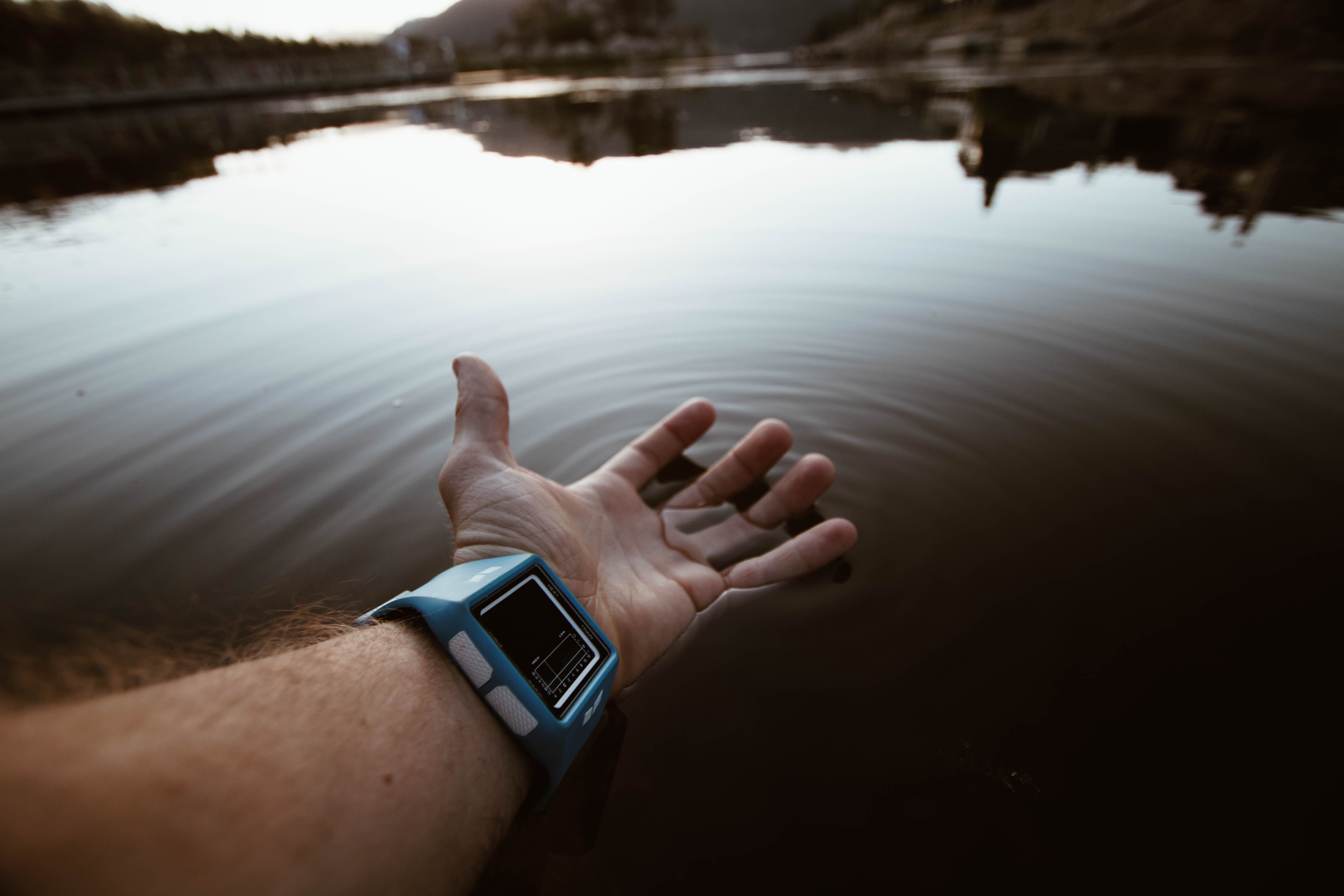

Features
Technology and Environmentalism in the 21st Century
Dakota Walker
Share
Technology is often seen as the antithesis of nature, and justifiably so; it has rewarded its faithful followers with convenience and instant gratification as they steadily withdraw from the world around them. It may surprise you to discover that American adults spend only 5 percent of their day outside– less time than they spend in cars.1 And if that wasn’t surprising, how about the 11 hours a day that typical American adults spends using electronics.2 Accepting that the fight to limit technology in our daily lives is futile, many environmentalists now ask how technology can instead be used to engender environmental stewardship and an appreciation for well-crafted space in an increasingly screen-dependent population.
Recent technological advances are providing environmentalists a new set of tools to do just that. Whether it’s virtual reality, location-based gaming, or wearable health monitors, innovation is changing the way we interact with nature, and providing new capabilities to understand our intricate connection with place. Recognizing the vast potential of such technology, both in shaping human behavior and quantifying the benefits of connection with nature, will be a key determinate in our ability to progress sustainably in the Information Age.
Virtual Reality: Content That Inspires Action
Have you ever awoken from a dream only to find it still affecting you, unable to emotionally detach yourself from this dream-reality? Our brain’s response to external information often relies on how real or immediate that information seems to us. Virtual Reality (VR) is highly effective at promoting an empathic response and inspiring action by creating realistic and immersive virtual environments, in which participants feel both emotionally and physically tied to the depicted space. This idea takes root in George Lakoff and Rafeal Núñez’s theory of Embodied Cognition, which holds that our cognition is determined, in part, by our physical experiences of the external environment. In effect, “the body influences cognition.”3 This would suggest that immersive virtual environments that allow an individual to physically interact with the content should have a greater capacity to inspire action than conveying the same information in a standard video or article.
[The brain] tends to remember 10% of what it reads, 20% of what it hears, but 90% of what it does or simulates” Edgar Dale
In an effort to expand this unique characteristic, HTC, an electronics company specializing in smartphones and VR hardware, has established a ten million dollar VR funding program to expand immersive content around the UN Sustainable Development Goals. The VR for Impact program supports innovative approaches to portraying each UN development goal. The program believes that “[e]ducation through immersive experiences creates awareness, and can lead the world to act on global issues the human race is facing with a sense of commonality.” 4 In a fundraising event for Syrian refugees, the UN utilized VR content to convey the dire circumstances faced by refugees. The event was hugely successful, exceeding the predicted $2.3 billion in donations by an astounding $1.5 billion.5
Often, biophilic design practitioners place too much attention on the visual aspects of nature with little engagement of the other senses. To activate the physiological effects of exposure to nature, VR must integrate a symphony of multi-sensory feedback mimicking the complexity and depth found in nature. Imagine VR content that allows users to smell the fragrant flowers of a plumeria tree, hear the gentle flow of a nearby creek, or feel the slight pinch of a bird’s talons as it rests on your shoulder. For more information. check out our blog post: The Multi-Sensory Experience of Design. 360 degree image copyright Stew Dean/ Flickr.
While many current efforts are focused on content that inspires donation, researchers have begun to utilize immersive environments for their ability to influence human behavior and deter unsustainable practices. In a study conducted by Virtual Human Interaction lab at Stanford University, participants were placed in a virtual environment and asked to cut down a virtual tree. By studying participant behavior before and after the VR activity, researchers found those participants used 20% less paper that same day.6 These strategic virtual activities have only just begun development, but as immersive technologies improve, they will likely revolutionize our ability to shape human behavior and curb the many irrational decision-making practices that impede sustainable progress.
Location-Based Gaming: Off the Couch, Into the Street
The Environmental Movement is often criticized for relying on negative messaging to promote action. However effective this strategy may be, it must be balanced with a display of the wonder and beauty of the natural environment, allowing individuals to internalize a desire for environmental stewardship. Though somewhat counterintuitive, a new genre of online gaming is playing a key role in helping a younger, more technologically-reliant generation to engage with natural and built environments in a reimagined way. Location-based gaming, or “Urban Gaming” as it has been called, utilizes smartphone GPS to shape gameplay around key locations in our public spaces.7 Applications for location-based media are immense, but they all share two commonalities: promotion of outdoor exploration and in-person interaction with fellow gamers.
Google’s “Ingress” is one such game that fosters a reengagement with the outdoors. Ingress uses key cultural locations within a city as bases to be captured by two opposing teams.8 While the plot remains within typical video game themes, the strategy —requiring a greater understanding of the community in which they live— justifies its designation as a unique genre of videogame. Such implications have caught the eye of Anthony Buccitelli, professor of American studies and communications at Penn State University. Dr. Buccitelli is particularly interested in the effect of location-based gaming on community building and cultural heritage site recognition.9 He found that “Ingress enables players to learn about their communities and establish meaningful relationships with the physical landscape that perhaps would not otherwise exist.” 9
The significant characteristic of this genre of gaming is its ability to shape city exploration and promote cultural heritage education. Gamers are rewarded for exploring new parts of the city and completing “missions” that network locations together to create themes for education or exploration. For example, players can complete a mission centered around exhibits at the Smithsonian museum, or one that guides them through the most scenic parts of a city.8 The beauty of this game design is the flexibility it promotes in creating game content that captures countless types of experiences— even encouraging users to create and share game content of their own. While the “missions” mainly center around city landmarks, favorite restaurants, or scenic tours, content can just as easily focus on ecological hotspots, environmental teaching moments, or biophilic spaces within a city. By promoting a recognition of the unique and exceptional spaces within a city, location-based media may prove to be a compelling approach to garnering support for new urban planning initiatives or general city improvements that maintain and expand those unique aspects of a city.
Wearable Health Monitors: Quantifying our Connection to Nature
As an appreciation for personal health and well-being expands into both home and work culture, the consumer tech market is responding with a massive influx of wearable health monitoring devices tasked with expanding one’s capabilities to assess their surrounding and track personal health. With one-in-six consumers currently using wearable technology, this is already changing our acknowledgement of human health and its relationship with our external environment.10 More surprising is the technology’s effect on productivity. A study led by Dr. Chris Brauer at the University of London found employees that started using wearable technology increased their productivity by 8.5% and job satisfaction by 3.5%.11 Why should monitoring seemingly unrelated health indicators affect an employee’s productivity? Is it the sense of control and empowerment that nudges a worker to take notice of their physical state of being and shape decision-making accordingly? Often, the power of these devices is not the actual data, but the reminder that your actions are intricately tied to your well-being.

Image copyright Jeremy Bishop/ Unsplash.
While today’s wearables monitor body health indicators such as heart rate, temperature, or sleep quality, their ability to monitor more complex responses will likely increase as the technology evolves. Electroencephalogram (EEG) is an instrument that measures brain activity by detecting the electronic impulses that brain cells use to communicate.12 Although EEG has been around since the 1930’s, recent developments in mobility and cost-effectiveness are transforming this device into a wearable technology. The mobility and quality of data has immense applications in the field of Biophilia, currently limited by the technological capacity to quantify physiological responses of our innate connection with nature.13 David Strayer, a cognitive psychologist at the University of Utah, is using EEG, along with other health indicators, to quantify the benefits of extended stays in nature. Among Strayer’s many findings was that participants “[p]erformed 50 percent better on creative problem-solving tasks after three days of wilderness backpacking.” 1 These efforts advance our understanding of the connection between nature and productivity. But they remain limited to the progression of supportive technologies like EEG headsets. As the accuracy, reliability, and portability of EEG headsets increases, researchers can begin to apply biophilic research initiatives to a new scope of projects, informing our understanding of the implications of biophilic design and well-crafted public spaces.
While the field of Biophilia continues to develop, it is essential to establish user-friendly biophilic response indicators, allowing individuals to recognize the benefits of connection with nature for themselves.”
The Cloud Lab, part of Columbia’s Graduate School of Architecture, Planning and Preservation (GSAPP), is demonstrating design-focused applications for brain activity information. The research group has taken to the streets of Brooklyn, New York, and Seoul, Korea, using an EEG headset to gather brainwave data based on the differing external stimuli of the neighborhood streets and public spaces.14 Overlaying visualized brainwave data identified as ‘attention’ and ‘meditation’, they have begun to discover interesting patterns outlining the relationship between the exterior environment and our mental state.14 One such finding suggests organized, grid street patterns promotes a meditative mental state, while intersections and ambiguous areas demands attentive brain activity.14 While results are subjective to the participants’ perception, aggregate brainwave data has a significant potential to reshape our understanding of human’s response to place, and inform principles of design. Armed with this new layer of data, individuals can redesign their outdoor activities to consider the mental effects of a city’s public spaces, and in doing so, encourage the integration of biophilia into more aspects of urban planning.
Expanding Our Ability to Create Change
As we allow these informational inputs to inform personal decision making and human behavior, the way we appreciate and utilize space will inevitably change. VR can help advocacy groups tailor content to maximize action and shape human behavior; location-based games can promote environmental education and outdoor exploration in a way that interests a technologically-intertwined generation; and wearable health monitors can influence an individual’s understanding of health and well-being as it relates to external environments.
While technological capabilities are still emerging, we must remain open to novel applications that align this innovation with our individual values of personal health, connection to nature, and community engagement, as well as global values of sustainable development and human justice. These technologies represent a paradigm shift in which an individual’s decisions, aggregated as metadata, have the power to create a more democratic, information-driven approach to macro-level decision making. So, instead of bemoaning the tumultuous first stages of this technology – culture integration, let’s face technology with a renewed sense of purpose and embrace our role as small contributors to a collective vision of sustainability.
*Update: Interested in learning more about how emerging technologies are aiding designers and environmentalists? Check out our recent blog post providing additional resources on the many intersections of technology and design.
References
-
Williams, F. (2016). This is Your Brain on Nature. National Geographic. http://www.nationalgeographic.com/magazine/2016/01/call-to-wild/
-
Nielsen NPM Panel. (2014). The total audience report: Q4 2104. Nielsen. http://www.nielsen.com/content/dam/corporate/us/en/reports-downloads/2015-reports/total-audience-report-q4-2014.pdf.
-
McNerney, S. (2011). A brief guide to embodied cognition: Why you are not your brain. Scientific American. https://blogs.scientificamerican.com/guest-blog/a-brief-guide-to-embodied-cognition-why-you-are-not-your-brain/
-
VR for Impact. (n.d.). https://vrforimpact.com/
-
Enser, C. (2016). Virtual reality: Aid groups play with idea that it could prompt more to care – and give. Humanosphere. http://www.humanosphere.org/social-business/2016/06/virtual-reality-aid-groups-play-with-idea-that-it-could-prompt-more-to-care-and-give/
-
Bailenson, J. (2014). Virtual reality could make big difference in the environment. SF-Gate. http://www.sfgate.com/opinion/article/Virtual-reality-could-make-real-difference-in-5691610.php
-
Grabianowski, E. (n.d.). How urban gaming works. http://adventure.howstuffworks.com/outdoor-activities/urban-sports/urban-gaming.htm
-
Henry, A. 2015. How ingress, Google’s real-world smartphone game, got me out of my shell. https://lifehacker.com/how-ingress-googles-real-world-smartphone-game-got-me-1710320867
-
Devan, K. (2017). New research suggests location-based games influence our perception of culture. https://phys.org/news/2017-01-location-based-games-perception-culture.html
-
Piwek, L., Ellis, D.A., Andrews S., & Joinson, A. (2016). The rise of consumer health wearables: Promises and barriers. PLoS Med 13(2): e1001953. https://doi.org/10.1371/journal.pmed.1001953
-
University of London: Institute of Management Studies at Goldsmiths. (2014). The human cloud at work: A study into the impacts of wearable technology in the workplace. Rackspace. http://smoothmedia.com/download/Human_Cloud_at_Work.pdf?key=YP84-b6Vjk88Uy90mC1QFfSVTMbOk5U9
-
Mayo Clinic Staff. (2014). EEG (Electroencephalogram). Mayo Clinic. http://www.mayoclinic.org/tests-procedures/eeg/basics/definition/prc-20014093
-
Tudor, K.L., Tudor, L., & Tudor, M. (2005). Hans Berger (1873-1941)–the history of electroencephalography. Acta Med Croatia. 2005;59(4):307-13.
-
Cloud Lab at Columbia GSAPP. (2014). Dumbo neural cartography. Columbia GSAPP. http://www.thecloudlab.org/dumbo_neural_cartography.html
*Header and Feature Image: Jordan McQueen/Unsplash
Filed under:
Dakota Walker
Dakota Walker is an Associate Project Manager & Research Analyst at Terrapin Bright Green. He recently graduated summa cum laude from the University of North Carolina Asheville with a degree in Environmental Management and Policy. Dakota believes the genius of nature has yet to be matched by human innovation. He’s interested in finding new approaches to solving contemporary policy and design challenges that reflect the resilience and resourcefulness of natural systems.
Topics
- Occupant Comfort
- Materials Science
- Speaking
- LEED
- Terrapin Team
- Phoebe
- Community Development
- Greenbuild
- Technology
- Biophilic Design Interactive
- Catie Ryan
- Spanish
- Hebrew
- French
- Portuguese
- Publications
- Carbon Neutrality
- Environmental Values
- Conference
- Psychoacoustics
- Education
- Workshop
- Mass Timber
- Transit
- Carbon Strategy
- connection with natural materials
- interior design
- inspirational hero
- biophilia
- economics of biophilia
- Sustainability
- Systems Integration
- Biophilic Design
- Commercial
- Net Zero
- Resorts & Hospitality
- Energy Utilization
- Water Management
- Corporations and Institutions
- Institutional
- Ecosystem Science
- Green Guidelines
- Profitability
- Climate Resiliency
- Health & Wellbeing
- Indoor Environmental Quality
- Building Performance
- Bioinspired Innovation
- Biodiversity
- Residential
- Master Planning
- Architects and Designers
- Developers and Building Owners
- Governments and NGOs
- Urban Design
- Product Development
- Original Research
- Manufacturing
- Industrial Ecology
- Resource Management
- Sustainability Plans
- Health Care



